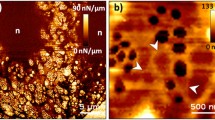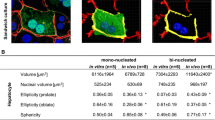Abstract
Scanning laser cytometry, an analytic technique that provides an accurate fluorescent measurement in adherent cells, was used to study cholestatic mechanisms in isolated rat hepatocyte couplets (IRHC). Treatment of IRHC with cholestatic compounds induced a pericanalicular F-actin accumulation and an increase in cytosolic free calcium. These data obtained with a scanning cytometer used in conjunction with anin vitro model representing the primary secretory unit suggest that abnormalities of pericanalicular F-actin filaments and calcium homeostasis play a key role in cholestasis. Considering the necessity for the development of mechanistic studies in toxicology, this technique should prove to be an outstanding tool.
Similar content being viewed by others
Abbreviations
- ANIT:
-
α-naphthylisothiocyanate
- [Ca2+]i :
-
cytosolic calcium
- CF/TF:
-
canalicular area fluorescence/total couplet fluorescence
- EE:
-
ethynil estradiol
- ERY:
-
erythromycin estolate
- FCS:
-
fetal calf serum
- FITC-phalloidin:
-
fluorescein isothiocyanate phalloidin
- Indo-1-AM:
-
indo-1-acetyloxymethyl ester
- IRHC:
-
isolated rat hepatocyte couplet
- L15:
-
Leibovitz 15
- PH:
-
phalloidin
- TEST:
-
methyltestosterone
References
Anwer MS, Engelking LR, Nclan K, Sullivan D, Zimniak P, Lester R. Hepatoxic bile acids increase cytosolic Ca2+ activity of isolated rat hepatocytes. Hepatology. 1988;8:887–91.
Boyer JL. Mechanisms of bile formation and cholestasis. Scand J Gastroenterol. 1983;18:51–6.
Boyer JL, Gautam A, Graf J. Mechanisms of bile secretion: insights from the isolated rat hepatocyte couplet. Semin Liver Dis. 1988;8:308–16.
Carlier MF. Actin: protein structure and filament dynamics. J Biol Chem. 1991;266:1–4.
Combettes L, Dumont M, Berthon B, Erlinger S, Claret M. Release of calcium from the endoplasmic reticulum by bile acids in rat liver cells. J Biol Chem. 1988;263:2299–303.
Connolly AK, Price SC, Connelly JC, Hinton RH. Early changes in bile duct lining cells and hepatocytes in rat treated with α-naphthylisothiocyanate. Toxicol Appl Pharmacol. 1991;93:208–19.
Graf J, Gautam A, Boyer JL. Isolated rat hepatocyte couplets: a primary secretory unit for electrophysiologic studies of bile secretory function. Proc Natl Acad Sci USA. 1984;81:6516–20.
Herman B, Gores GJ, Nieminer AL, Kawanishi T, Harman A, Lemasters JJ. Calcium and pH in anoxic and toxic injury. Toxicology. 1990;21:127–48.
Korn ED. Actin polymerizatior and its regulation by proteins from non-muscle cells. Physiol Rev. 1982;62:672–727.
Low RB, Low ES, Chaponnier C, Mitchell JW, Gabbiani G. Effect of phalloidin on liver actin distribution, content and turnover. J Cell Biochem. 1982;20:393–407.
Nickola I, Frimmer M. Effect of phalloidin and cytochalasin B on cytoskeletal structure on cultured rat hepatocytes. Cell Tissue Res. 1986;245:635–41.
Philips MJ, Oshio C, Miyairi M, Watanabe S, Smith CR. What is actin doing in the liver cell? Hepatology 1983;3:433–6.
Schindler M, Allen ML, Olinger MR, Holland JF. Automated analysis and survival selection of anchorage-dependent cells under normal growth conditions. Cytometry. 1985;6:368–74.
Seglen PO. Preparation of isolated rat liver cells. Methods Cell Biol. 1976;13:29–83.
Thibault N, Ballet F. Effect of bile acids on intracellular calcium in isolated rat hepatocyte couplets. Biochem Pharmacol. 1993;45:289–93.
Thibault N, Claude JR, Ballet F. Actin filament alteration as a potential marker for cholestasis: a study in isolated rat hepatocyte couplet. Toxicol. 1992;73:269–79.
Thibault N, Claude JR, Ballet F. Cholestatic compounds induce F-actin alteration in vitro and in vivo. Pharmacol Toxicol. 1993;73(supplement II):109.
Zimmerman HJ. Intrahepatic cholestasis. Arch Intern Med. 1979;139:1038–85.
Author information
Authors and Affiliations
Rights and permissions
About this article
Cite this article
Thibault, N. Scanning laser cytometry: alterations induced by cholestatic agents in isolated rat hepatocyte couplets. Cell Biol Toxicol 10, 323–328 (1994). https://doi.org/10.1007/BF00755778
Accepted:
Issue Date:
DOI: https://doi.org/10.1007/BF00755778




